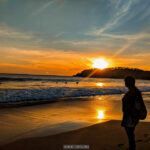
Facts about Durbar square, Kathmandu in Nepal
Durbar Square, Kathmandu is not just a tourist attraction, but a living museum of Nepal’s rich history and culture. Here are 15 facts that will make you want to pack your bags and go there right now.
Durbar Square is one of the three royal squares in the Kathmandu Valley, where the kings of Nepal used to live and rule. The other two are Patan Durbar Square and Bhaktapur Durbar Square. They are all UNESCO World Heritage Sites.

Durbar means palace in Nepali, and this square has many palaces, temples and monuments that date back to the 13th century. The kings of the Malla and Shah dynasties built them over hundreds of years.
The name Kathmandu comes from a wooden pavilion that was in the square until it collapsed in the 2015 earthquake. It was called Kasthamandap, which means “wooden house” in Sanskrit. It was built in the 7th century from a single Sal tree.

The square is also called Hanuman Dhoka, which means “Hanuman Gate”. Hanuman is the monkey god who helped Lord Rama in the Hindu epic Ramayana. There is a statue of Hanuman at the entrance of the palace complex, which was put there by King Pratap Malla in 1672. People worship him and offer him red vermilion.
The palace complex has many courtyards, halls and museums where you can see the royal treasures, weapons, paintings and sculptures of different eras. The most famous courtyard is Nasal Chowk, where the kings were crowned.

One of the most fascinating things in the palace complex is the Kumari Ghar, or the House of the Living Goddess. This is where the Kumari lives, a young girl who is believed to be the incarnation of Goddess Taleju, the patron goddess of the kings. She is chosen from among the Buddhist girls of the Shakya caste, who have to pass many tests of purity and bravery.
The Kumari is worshiped by both Hindus and Buddhists as a symbol of divine energy. She rarely leaves her temple, except for festivals and special occasions, when she is carried on a chariot through the streets of Kathmandu. She is not allowed to touch the ground or bleed, as that would mean she has lost her power and a new Kumari has to be chosen.

One of the festivals that features the Kumari is Indra Jatra, which is celebrated at the end of the monsoon season to honour Indra, the king of heaven and God of rain. During this festival, a huge wooden pole with flags is erected in front of the palace and various masked dances and processions take place around the square.
Another festival that takes place in Durbar Square is Dashain, which is celebrated to commemorate the victory of Goddess Durga over the demon Mahishasura. During this festival, hundreds of animals are sacrificed to please the goddess and her different forms, such as Kali, Bhairavi and Bhavani.

One of the most impressive temples in Durbar Square is Taleju Bhawani Temple, which is dedicated to Goddess Taleju. It was built by King Mahendra Malla in 1564 and stands at 35 meters high, making it one of the tallest temples in Nepal. It has four roofs and a gold-plated pinnacle and is decorated with intricate carvings and statues.
Another beautiful temple is Shiva Parvati Temple, which was built by King Rana Bahadur Shah in 1797. It has a wooden balcony where you can see the statues of Shiva and Parvati looking down at the people below. The temple also has a bronze bell that was donated by King Rana Bahadur Shah after he returned from his exile in India.

A third temple that attracts many visitors is Kaal Bhairav Temple, which has a huge stone image of Kaal Bhairav, a fierce form of Lord Shiva who is associated with destruction and annihilation. The image was originally in a different temple but was moved to Durbar Square by King Pratap Malla in 1674. It is said that anyone who lies in front of him will die instantly.
A fourth temple that is worth mentioning is Jagannath Temple, which was built by King Pratap Malla in 1651. It is famous for its erotic carvings on the roof struts that show various sexual positions and acts. The temple also has a wooden image of Garuda, the mythical bird that serves as the mount of Lord Vishnu.

Durbar Square is not only a place of historical and religious significance, but also a lively hub of social and cultural activities. The square is surrounded by shops, cafes, restaurants and hotels that cater to the needs and tastes of locals and tourists alike. The square is also close to Freak Street, a hippie hangout in the 1960s and 1970s, and Asan, a bustling local market that sells everything from spices to electronics.
Durbar Square is a place where you can experience the past and present of Nepal in one place. It is a place where you can admire the architecture, art and craftsmanship of the Nepalese people. It is a place where you can witness the faith, devotion and rituals of the Nepalese people. It is a place where you can feel the energy, vibrancy and diversity of the Nepalese people. It is a place that you will never forget.











